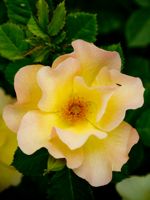Mon-Fri 9am - 5pm Mountain time
Western Snowberry vs Morden Sunrise Rose
Symphoricarpos occidentalis
Rosa Morden Sunrise
NOT AVAILABLE THIS SEASON - MIGHT RETURN
NOT AVAILABLE THIS SEASON - MIGHT RETURN
Like the Common Snowberry, the Western Snowberry is a small shrub with pink flowers useful for feeding livestock and preventing erosion. Unlike the common species, however, the Western Snowberry is much more suited to wet conditions, capable of persevering through poor soil drainage and occasional flooding.
After the Snowberry's flowers have bloomed, it produces berries which often last on the plant through winter. These berries are toxic to humans, but livestock and local wildlife love them! Those hoping to attract wildlife to their property can plant Snowberry and expect to see animals foraging on it much later in the year than other plants.
The Morden Sunrise Rose is a popular shrub due to its yellow blooms that fade to a peachy-pink later in the summer and fall. These double flowers are lightly-scented and emerge from distinctive orange flower buds. It has a compact habit of growth, making this a refined addition to your garden.
The Morden Sunrise Rose has glossy green foliage during the spring and summer months, with leaves turning yellow in the fall. It produces showy orange rose hips in mid to late fall, and is quite disease resistant.
Western Snowberry Quick Facts
Morden Sunrise Rose Quick Facts
Toxicity: berries are toxic to humans

